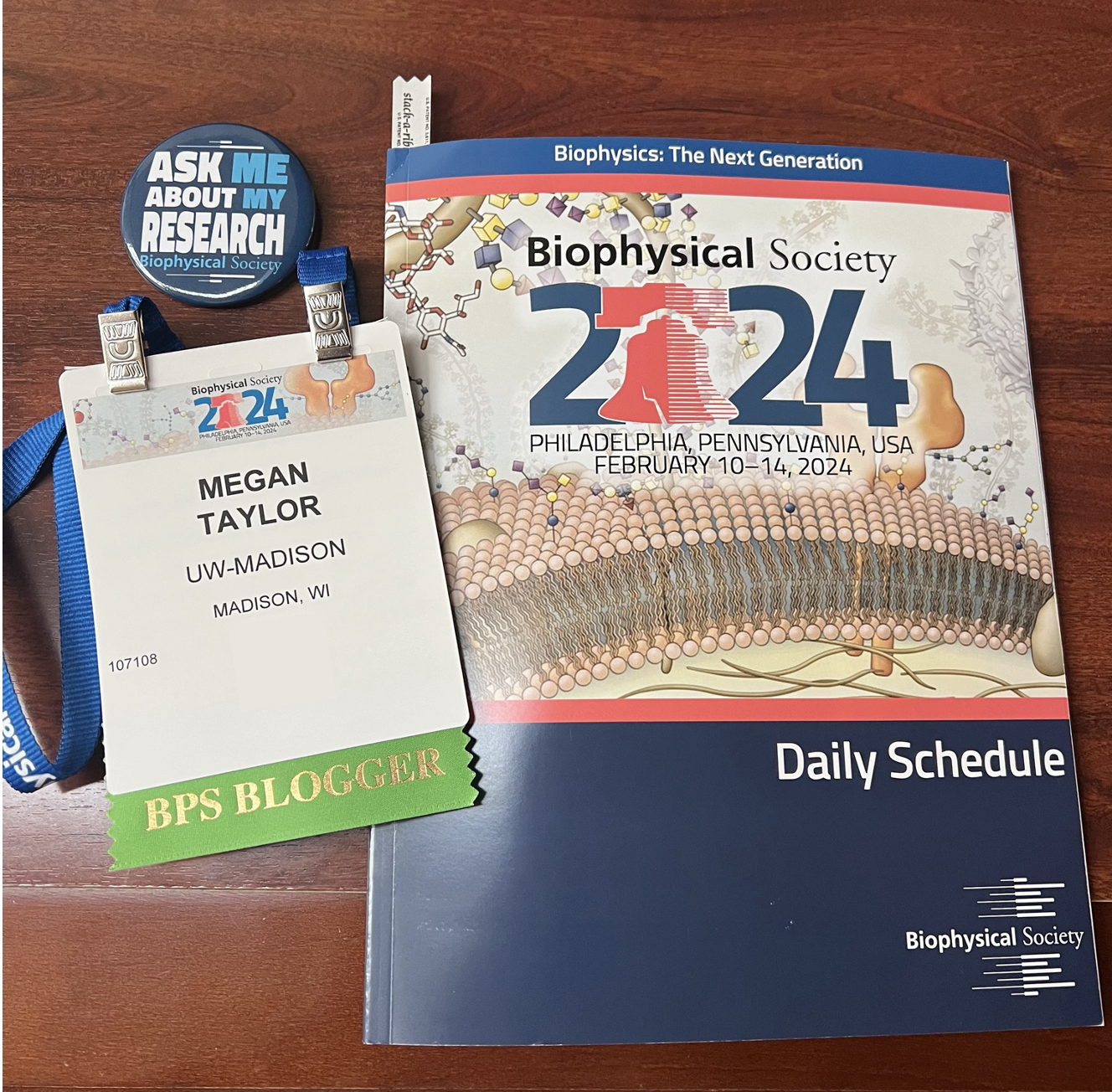We are on the cusp of concluding the 2024 BPS annual meeting. Many of us will be traveling home in the next day or so, which means we will be carrying our posters through many busy airports.
During my initial travel to the Philadelphia last week, I got a lot of questions from the public about my poster tube, “What is in that tube?” “What is your career path?”, and the biggest question, “What kind of science do you do?”

While this may seem like a daunting question to some scientists to answer in a short conversation, I find this practice exciting, as it helps us practice our translation skills of communicating science to the lay public. So, here are some quick tips to think through and prepare for in case you get asked these questions!
1) Asking someone “what is your background?”
This is something I ask anyone I talk about my science with, whether it is in a poster session or my interactions with the public. By asking someone what their career or background is, you are more able to adapt how you explain your research to them. This is especially helpful if you try to make connections or analogies between your work and theirs. Many times, this helps your audience relate and grasp what you are trying to communicate and can lead to productive conservations and more specific follow up questions!
2) Use basic vocabulary
Going off my first point, it is very important to leave the science jargon at home if at all possible, and switch that vocabulary out for more basic terms and explanations. This will also help you establish a better connection with your audience. I find this especially important when I meet someone who may say something like, “oh I do X career because I am no good at [ math, science, quantitative reasoning, etc.].” This helps make your science more accessible to your audience, as you try your best to meet them where they are in terms of understanding and comprehension.
3) Have supplemental photos or explanations available on a mobile device
I often have my poster as a pdf accessible on my phone to practice in the airport before the talk. Sometimes, I also download supplemental images from previous talks or papers to also have as a backup for myself if I need additional visual assistance when explaining a convoluted topic of my research. Both of these are great to have handy on your smart phone to use when you tell others about your research in an airport too! By providing visuals, you can further increase the feeling of inclusion and accessibility by giving your audience another avenue to connect with your research. Besides, I am sure they are dying to see what the poster in your tube looks like!
4) Utilize overall positve framing, and be okay with some pushback
My last piece of advice centers around the framing of your conversation and explanation of your science. In addition to making connections to your audience’s background and use of basic terms and visuals, it is also good to keep in mind how you frame your research. For me,, I like to frame my conversations as upbeat as possible by explaining a bit of what I do and how this could help contribute to knowledge that could help solve big problems in the world, such as sustainable practices or drug discovery. I never want to exaggerate what I do, given the misinformation crisis currently in America, but I also want to show people who normally do not interact with science in an everyday setting how excited I am to hopefully shape an overall attitude that reflects the same.
But sometimes, this will not work. Occasionally, you will meet someone who is not happy or not interested in your research or supporting science as a whole—and I am here to tell you, that is totally ok! It is not our job to challenge someone’s view of science, but just share a bit of what we do to answer their question. If your audience seems uninterested or argumentative, try changing the topic to ask what they do before politely ending the conversation. In most cases, this will lead to a better outcome than trying to relentlessly defend your views against theirs, which will not lead to any fruitful sort of outcome.
What other tips did I miss or what tips do others have? I would love to hear about them!
Disclosure statement: This cover image was generated by ChatGPT 4.0 using the prompt "use dall-e to make a realistic but also cartoon image of a scientist in the airport presenting a science poster to a pilot, have an airplane in the background so we know it is an airport"